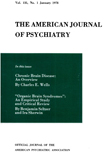Abstract
From our work, we would venture the following impressions:
1. Negro children, young and old, in most cases endure the stresses of initial desegregation in Southern cities without evidence of significant psychiatric illness. In order to understand why this occurs, the general problems of adjustment required of the Negro in his daily life, from birth to death, must be considered. Many of the strains met by these children and their families are similar to those often encountered elsewhere. In order to cope with such conditions, these children must learn, must be also taught, a variety of psychological maneuvers, and these will serve in desegregated schools as well as on busses, outside theatres, and restaurants. These defenses described in this paper against anxiety, fear, retaliatory anger, shame, and guilt, develop slowly, require constant emotional energy, the continual vigilance of a precarious position in our society. For these children, therefore, desegregation is an opportunity, a kind of trouble which, in contrast to other experiences, makes sense and offers hope of a better life with less hurt in the future. So long as their home life is reasonably satisfactory, so long as they do not have serious personality disorders stemming from their personal psychological development, they seem able to withstand mobs, and the variety of pressures arising from their entry into white schools. We have tried to document some of these pressures and responses to them, and have seen that the trials of desegregation fit into the other problems of the growing child, reflecting them, increasing them, or serving their expression.
2. For the white child, desegregation will have a variety of meanings, depending on his family, his age, and his own nature, needs, and wishes. Compassion, lack of interest, annoyance, strong aversion, all these reactions have been seen, and their roots traced in individual children and their parents. We can clinically distinguish between those families where segregation is a consuming, highly charged interest, a passionate expression of other problems, and those where it is less integrated in earlier, more basic emotional troubles; thus more changeable as a social habit or custom, strongly and long held, but slowly dispensable when opposed by other wishes or customs. Even among the poorest and most insecure of our families, socially and economically, these differences obtain.
3. Some of the meanings of color, of black and white, to children have been explored. Deeply present in our culture, they indicate the sources of later attitudes and behavior in both whites and Negroes. We have attempted to convey the feelings of these children toward one another, helped by their actual words, their dreams and drawings, their play. We have also tried to indicate some of the ways their parents and teachers choose to behave, how they, too, get along in these tense situations. Finally, we have indicated some of the hurdles along the path of such study of active social and political crises by a psychiatrist.
4. We have seen changes in these southern children, in Negroes toward less doubt and more trust, in whites toward less hostility and more freedom to see another person as a person, regardless of skin color. We have also seen hardening of suspicion, congealing of hatreds. Since we are dealing with a problem in human development, in stress and response to stress, in early anxieties, rivalries and strains within the family being reflected and expressed in later social and economic realities, there is every reason for both hope and despair. Genes do not present an ineradicable barrier, grounded in biochemistry, against easing conflicts or harsh legal and social inequalities among individuals and groups; but the fatal and reciprocally stimulating engagement of private disorders, personal anxieties, fears, and frustrated hopes, with publicly sanctioned expressions for them, solidified in history, allowed by law, encouraged by communities for their various reasons, is not easily broken. These children have shown us both possibilities, of growth and of continuing affliction.

